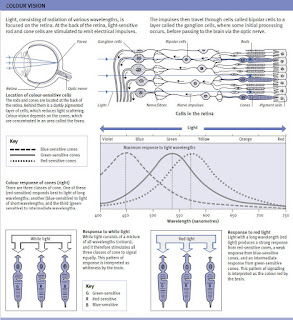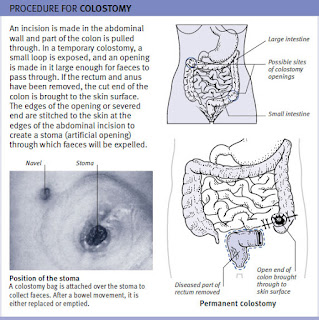The colour vision - The ability to see and distinguish the different parts of the colour spectrum, which consists of electromagnetic radiation (energy waves) with a range of wavelengths between about 400 and 700 nanometres (millionths of a millimetre).Different wavelengths trigger nerve signals in the retina (the lightsensitive layer of cells at the back of the eye); these signals pass to the brain and are interpreted as violet, indigo, blue, green, yellow, orange, and red.
RETINAL FUNCTION:
As light falls on the retina, it strikes light-sensitive cells called rods and cones. The rods can detect all visible light, but only the cones can distinguish
colour. There are three types of cone: red-sensitive, blue-sensitive, and green-sensitive. Each of these types of cone responds more strongly to a particular part of the light spectrum. The cones are most concentrated in a central area of the retina called the fovea; for this reason, colour vision is most accurate for objects that are viewed directly. Colour vision is, therefore, poor at the periphery of vision.
When light hits a cone, it causes a structural change in the pigment within the cone, which in turn causes the cone to emit an electrical signal. This signal passes to the brain via the optic nerve. Colour perception requires a minimum level of light; below this level, everything is perceived only by the rods and is seen as various shades of grey. (See also colour vision deficiency; eye; perception; vision.)







